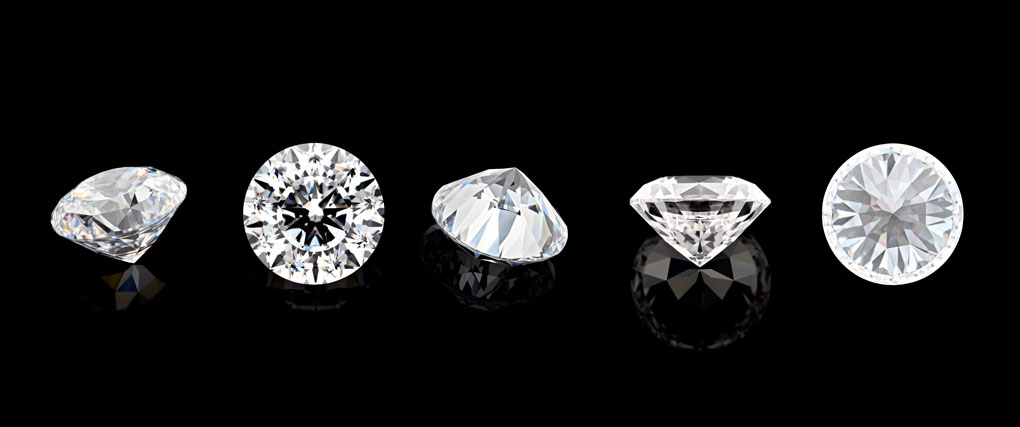Aujourd’hui, le diamant est la pierre précieuse la plus dure, la plus pure et la plus brillante au monde. Elle est aussi l’une des plus rares : en cause, son processus de création qui nécessite de 1 à 3,3 milliards d’années… Autant dire que depuis sa découverte il y a près de 5 000 ans, l’homme n’a eu de cesse de chercher à reproduire ce matériau exceptionnel.
Les ersatz de diamant créés ont été nombreux : d’abord, les strass au XVIIIe siècle en verre de plomb, le spinel synthétique, la fabulite ou encore le yag au début du XXe siècle… C’est le cubic zirconium, inventé en 1973, qui remportera finalement les faveurs des joaillers. En effet, le zirconium cubique, une fois taillé aux bonnes proportions, était difficilement identifiable – même par des professionnels – et à raison, ses propriétés sont très proches du diamant…

Une grande résistance aux hautes températures
Avec sa grande résistance aux hautes températures, le zirconium cubique s’avère être une des meilleures alternatives possibles au diamant, notamment pour le sertissage. Loin de la température de fusion remarquable du diamant qui culmine à 3546,85 °C, le CZ peut tout de même supporter d’être chauffé jusqu’à 2 680°C.
Sa brillance et sa transparence
L’indice de réfraction du zirconium est de 2,18, ce qui le place très proche du diamant dont l’indice est particulièrement élevé (2,41), lui donnant sa grande capacité à réfléchir la lumière. C’est principalement la bonne taille de la pierre qui lui donnera toute sa profondeur et sa brillance.
Son scintillement, ses “feux” arc-en-ciel
Le CZ est aussi une pierre synthétique à la dispersion très forte (0.058–0.066), bien supérieure à celle du diamant (0.044), ce qui signifie qu’il renvoie un fort scintillement – on dit qu’il brille de mille feux… C’est ce qui rend le cubic zirconia si particulier par rapport à ses concurrents et en fait une des meilleures alternatives au diamant !
Sa dureté
Le CZ est également particulièrement résistant, contrairement au strass très utilisé en bijouterie. Sur l’échelle de Mohs, mesurant la dureté des matériaux, il est en effet à 8,5 quand le diamant est à l’indice maximal qui est de 10. En comparaison, le cristal synthétique – comme chez Swarovski – a une dureté de 7. Plus la dureté est élevée, plus la pierre restera intacte dans le temps : le diamant par exemple ne présentera jamais de rayure à sa surface.
Son prix
La rareté d’un matériau fait son prix, le diamant ne déroge pas à la règle avec un prix moyen de 5000€ à 6000€ pour un diamant d’un carat (soit 0,2 grammes). Son prix est exponentiel en fonction du nombre de carats de la pierre : plus elle est grosse, plus elle est rare. En comparaison, le CZ est bon marché avec ses 1€ par carat.
Pour finir, si les diamantaires ont mis en place des certificats de garantie pour les diamants (reposant sur les “4C” : cut, clarity, carat, color), le cubic zirconia est désormais soumis aux mêmes exigences et attentes que la pierre la plus dure au monde. La gravure au laser, faite sur diamant comme garantie en supplément du certificat, s’est également démocratisée pour le CZ avec des acteurs du domaine comme Preciosa et Swarovski, et bientôt Dalloz…
Cependant, le diamant et le cubic zirconia se ressemblent, elles peuvent tout de même être facilement différenciées grâce à une analyse approfondie de leurs propriétés.